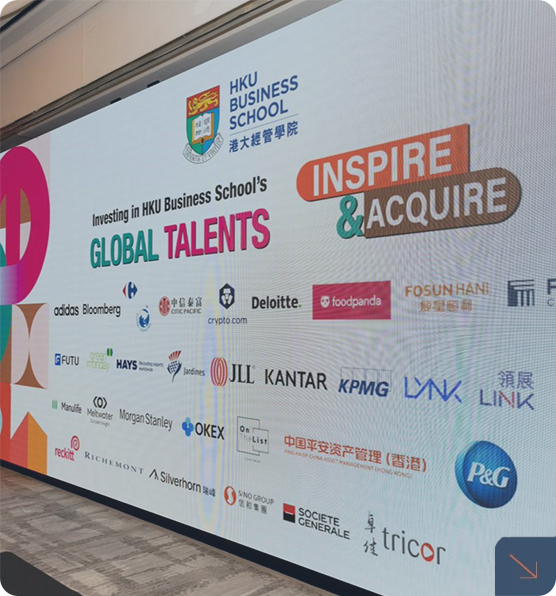
Behind Trump’s Tariff Hammer
Dr Y.F. LUK
9 April 2025
On the so-called “Liberation Day” last week, Donald Trump announced reciprocal tariffs on other countries as a perfect example of what it means to defy the world. Using the false narrative that America has long been ripped off by other nations as a pretext, new tariffs are imposed on almost all economies, covering the widest spectrum in history. This scheme is nonetheless typical of Trump’s slapdash and self-contradictory nature. If the American trade deficit reflects other nations’ unfair treatment of the US, then what about its trade surplus with Australia? Why levy a 10% tariff on Australian imports? Moreover, the American trade deficit only lies in goods while the US is the world’s largest exporter of services. In 2024, one quarter of the US goods trade deficit, amounting to US$1.22 trillion, was offset by its surplus in services trade, which amounted to US$300 billion. Naturally, none of these facts were mentioned in Trump’s speech.
As for the setting of tariff rates for different countries, Trump’s cavalier and high-handed approach might appear to be professional on the surface, but in actual fact, it is simply devoid of any economic basis. While he claims to calculate other nations’ average tariff rates on the US, the result, however, has absolutely nothing to do with foreign-imposed tariffs. Such a calculation method has sparked off furore in economic circles worldwide. This calls to mind the recent saga in which Peter Navarro, Trump’s counsellor for trade and manufacturing, cited the opinion of one expert named Ron Vara in his own book to support his views. Navarro later admitted that Ron Vara did not exist. The fictional expert was created by himself to lend credence to his book. Navarro, a trusted advisor of Trump, was already on the White House staff during Trump’s first presidency. There is no telling whether he is behind Trump’s current tariff policy. In any case, this episode may well be cited as a funny joke in economic history textbooks in future.
The fact that the reciprocal tariff rates are higher than market expectations has rapidly sent shock waves across economic and financial markets. According to calculations of the Budget Lab at Yale (see Note 1), after incorporating the reciprocal tariffs announced on 2 April 2025 and previously announced tariffs, including two rounds of 10% on China; 25% on Canada and Mexico; as well as 25% on all motor vehicles, steel, and aluminium, the average effective US tariff rate now stands at 22.5%. This marks the highest level since 1909, surpassing the levies imposed under the Smoot-Hawley Tariff Act during the Great Depression in 1930. The Yale Budget Lab has also estimated that the tariffs combined will push up American prices by 2.3% in the short term, cutting household expenditure by US$3,800 on average and reducing US real GDP growth rate by 0.9% in 2025. These consequences are serious enough even without considering countermeasures by other countries. In view of the significant damage to the US economy, why does the Trump administration continue to revel in waging the tariff war and keep raising the stakes?
Despite Trump’s claim of non-involvement, it is still possible to tease out information from two reports on the US economic policy under his second-term presidency. One report, published by the Heritage Foundation to target its own soil and government departments, is called Project 2025 (see note 2). The other report, written by Stephen Miran, newly appointed Chair of the US Council of Economic Advisers, has been released by another think tank, focusing on the relations between America and international trade and finance (see Note 3). Both reports are similar in that they advocate sweeping reforms driven by dissatisfaction with existing systems.
In Miran’s opinion, one severe economic problem of the US lies in the dollar’s status as the primary foreign exchange reserve currency. Although central banks still hold gold since it was delinked from the US dollar in 1971, US dollar-denominated assets, particularly American treasurys, have increasingly been a major reserve for central banks. With the growth in the global economy, so too grows the demand for foreign reserve assets, thereby sustaining the high exchange rate of the greenback. This has stunted US exports on the one hand and driven up US imports on the other, dealing a blow to the manufacturing sector. In effect, America’s role as a reserve-asset provider is becoming more burdensome. Miran argues that other countries must now shoulder part of the costs. To achieve this goal, the US should impose new tariffs and depreciate the dollar.
To many commentators, the status of US dollar assets as the world’s key foreign reserve is a great boon to America. The reason behind this is that, in order to hold US dollars, which have no intrinsic value, other countries must first export products of value to the US. This phenomenon has come to be known as America’s “exorbitant privilege”, a term coined by the French decades ago. This reveals differing perspectives on how American currency flows to other countries. To Miran and some economists, countries that intend to hold dollars as a foreign exchange reserve or investment tool have to curb consumption and expand savings. The surplus products are then exported to the US, creating a trade surplus with America. Perhaps more economists believe that overconsumption — including that of foreign products — by the American government and individuals is the cause of trade deficit, which is then addressed by printing more banknotes to pay other nations.
Nevertheless, Miran thinks tariffs and exchange rates are the game changers. On the one hand, he does not want the US to relinquish the dollar’s status as a foreign reserve asset and wants it to continue to enjoy the “exorbitant privilege”. Recently, Trump threatened punitive tariffs on BRICS nations if they continue to push for de-dollarization. On the other hand, he expects other countries to foot the bill. Trump’s modus operandi aligns with his own deal-making style. Since many countries maintain dollar-denominated foreign exchange reserves, Trump is raising tariffs on almost all nations, irrespective of whether they run trade surpluses or deficits with the US. Those with larger trade surpluses and thus are more likely in possession of huge dollar reserves generally face higher tariffs. This may explain America’s tariff calculation methodology but it is unclear whether it originated with the Trump administration.
Tariffs increase the dollar prices of foreign products on US soil and diminish the amount of foreign products that American consumers buy. This is precisely what tariffs are meant to achieve: provide uncompetitive domestic companies with some leeway to survive. At the same time, this clearly demonstrates that tariffs are borne by American consumers rather than by the exporting countries, contrary to Trump’s claims. Nevertheless, rising prices are not what Americans want. After all, Trump won the presidential race last year primarily due to voters’ dissatisfaction with inflation under the Biden administration. Now that tariffs are raised on multiple countries, prices of both imports and domestic substitutes are expected to surge. Miran has come up with “currency offset” as his own take to address this point. He contends that currency devaluation of exporting countries will follow the implementation of the new US tariffs. Firstly, US demand for both foreign products and currencies will slow down. Secondly, exporting countries may take the initiative to depreciate their currencies to promote exports as a means of counteracting the pressure of US tariffs. Miran views the resulting weakening of exporting countries’ purchasing power on the international market as tantamount to shouldering US tariffs. He points out that in the wake of the first round of China-US trade war between 2018 and 2019, inflation did not emerge in the US. Relevant data shows that during this round of trade war, varying tariffs averaging below 20% have been imposed on different Chinese imports. The exchange rate of the RMB to the US dollar depreciated by approximately 10% from mid-2018 to the end of 2019.
This year, the US have levied tariffs on nearly every country, with an average rate of 22.5% as mentioned above. The impact on prices in the US will inevitably be more significant compared with 2018, casting doubt on the effectiveness of Miran’s “currency offset” concept. Given that the tariff war has just started, national governments are still formulating their responses and it remains to be seen whether they will adopt China’s example of taking strong countermeasures. In the face of tit-for-tat tariff hikes worldwide, to what extent could fluctuations in currency exchange rates counteract the resulting fluctuations in prices and inflation?
Furthermore, if, as Miran predicts, all other currencies depreciate against the dollar to a certain extent following America’s tariff rise, this would mean the greenback will remain strong, setting the scenario back to square one: both the US trade deficit and external debt will persist while other countries will continue to hold dollars as foreign exchange reserves. What then springs to mind is the Mar-a-Lago Accord, which has been frequently mentioned in the media of late. Similarly, the 1985 Plaza Accord was prompted by the US trade deficit. During the meeting convened at the Plaza Hotel in New York, America pressured Japan and Western European countries to appreciate their currencies, which in turn facilitated the appreciation of the US dollar, as the US threatened to raise import tariffs on these nations. The Trump administration is probably attempting to replicate the same trick, which explains Trump’s scheme to establish a global tariff mechanism. Yet unlike four decades ago, America’s trade deficit is no longer largely derived from its allies. After decades of globalization, America now also has a trade deficit with many economies. To reinforce influence over American allies, Trump would offer military protection as a quid pro quo for these countries allowing their currencies to appreciate against the dollar, in effect transferring some of the costs related to maintaining the dollar’s international status. At the end of the day, everything is deal-making to Trump. Nonetheless, less than three months into his second term, Trump’s vacillations and his team’s incompetence have rapidly eroded the trust of other countries. How much value can still be placed on US military protection?
To the Trump administration, tariffs serve as both a means and an end. In addition to what is mentioned above, tariffs can directly generate revenue for the government. Although tariffs cannot fully replace major taxes, they can be instrumental in promoting reindustrialization to some extent. Nevertheless, the glory days of American industry are unlikely to be rapidly resurrected as industrial development takes time. How long the US economy can sustain itself amid the high tariffs remains to be seen. In essence, the grave danger of America’s tariff stick lies not in the tariffs per se but in Trump’s understanding of tariffs and trade, along with his governing team’s competence. Regrettably, the whole world is thrown into pointless chaos because of these individuals and this turmoil has just begun.
Note 1: https://budgetlab-yale-edu.eproxy.lib.hku.hk/
Note 2: https://static.project2025.org /2025_MandateForLeadership_FULL.pdf







